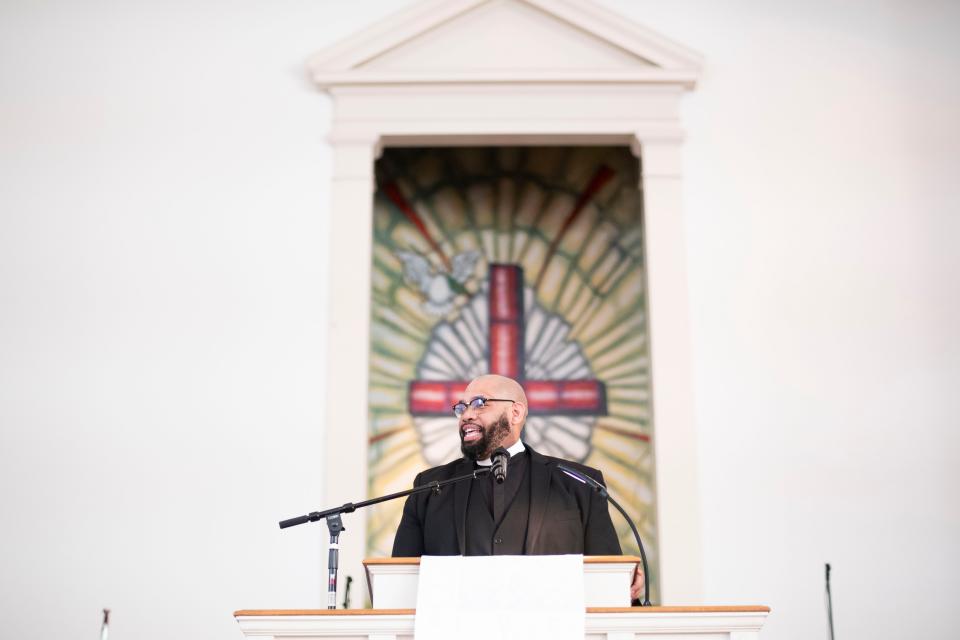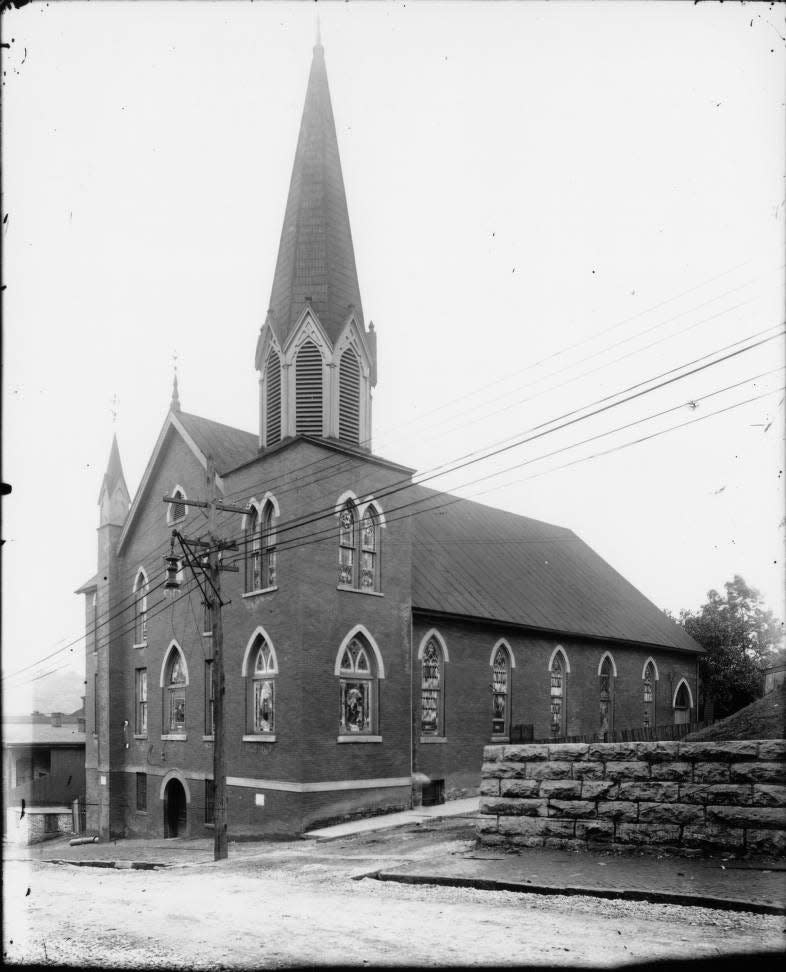Oldest churches in Knoxville date back 100-200 years | Know Your Knox
The oldest church congregation in Knoxville is older than the state of Tennessee and predates just about everything else in the region.
First Presbyterian Church has been an anchor of downtown life since the city’s founding in 1792. It helps that James White, who is credited with founding of Knoxville, was a founding member of the church, as well, provided the land for its first building.
Of course, had White been Baptist or Catholic instead of Presbyterian, it’s likely Knoxville’s oldest congregation would have been different.
(Outside the city, Little Flat Creek Baptist Church in Corryton traces its history back to 1797 and has to be considered one of the oldest congregations in the area.)
First Presbyterian has cycled through several buildings on the property over the years, the most recent built in 1903 which takes the church out of the running for the oldest church building. That distinction belongs to another downtown church.
What is Knoxville's oldest church building?
This one is harder to pinpoint. To make this list, the congregation must be old but so must the building. Many downtown churches have built new church buildings since their founding. First Baptist, for instance, is celebrating its 180th anniversary this year, but has been in its current location on Main Street for only 99 of those years.
In March, Knoxville historian Jack Neely wrote about a number of old Knoxville churches. The oldest church building on his list belongs to Immaculate Conception Church, which was constructed in 1886. St. John’s Episcopal Cathedral’s building was completed a few years later in 1892.
How well do you Know Your Knox? We answer the questions you really want to know
Some Black community’s church history erased
Knoxville’s first Black church wasn’t created until 1840, according to local historian and Knox News columnist Robert Booker. Most didn’t begin until after the Civil War, robbing communities of their place in the city’s history.
Even so, Booker told Knox News of several Black congregations that might have made this list but their buildings were uprooted by urban removal, the mostly federally funded program to remake American cities. Many used it as an opportunity to take over Black neighborhoods or create barriers between Black neighborhoods and downtowns or white neighborhoods. In Knoxville, urban removal occurred from the 1950s through 1970s and led to the construction of the James White Parkway and structures like the Knoxville Civic Auditorium in what used to be Black neighborhoods.
Whether those church buildings that were razed were the original building for those congregations is hard to say. Whether the buildings would still be used today if they had been left untouched by the city is impossible to say. In all, Booker said 14 Black churches were razed during Knoxville's urban removal.
One of the city’s oldest continuously operating Black churches, Greater Warner Tabernacle AME Zion Church, was founded in 1845, Booker said, but it has moved several times in its history. It was not caught in urban removal, he said.
Logan Temple AME Zion Church (1865)
This church was created in the waning days of slavery, in 1865. It was founded as Marble Alley Church at 108 Commerce Ave., on the same grounds where Marble Alley Lofts now stands.
The church built a new sanctuary in 1911, Pastor Sam Brown said, but members were forced to leave in 1965 to make way for the construction of the James White Parkway. Today, 108 Commerce Ave. no longer exists as an address, but city maps from the 1950s put it on the south corner of Commerce and South Central Street, across the street from the south end of the Downtown PetSafe Dog Park.

Tellingly, First Presbyterian, which is down the road close to the planned parkway and is home to a largely white congregation, was not required to move. Brown contends Logan Temple was even further away from the planned roadway than First Presbyterian, but that didn't stop city planners from targeting it for razing.
“It’s obvious the standards in what church had to move was based on the racial makeup of the congregation,” he said.
Logan Temple soon split as factions in the congregation couldn’t agree on where a new church should be, Booker said. A group created First AME Zion Church on McCalla Avenue, while Logan Temple moved to Selma Avenue.
Brown said the church’s previous lot on Commerce stayed empty until the apartments were opened in 2016. Historical photos provided by KGIS, the city’s mapping and property system, are not conclusive about when the church was torn down and whether anything else was constructed in its place before Marble Alley Lofts.

Regardless, this sort of treatment was not unusual in the days of urban removal. The family of Daniel Brown, the city’s lone Black mayor, was forced to leave their home along what is now Martin Luther King Jr. Boulevard in 1966. The lot stayed vacant until Dr. Walter Hardy Park was created in 1991.
Shiloh Presbyterian Church (1865)
Shiloh has moved several times, at least one of those prompted by urban removal, Booker said. The original church was on the corner of Clinch Avenue and Henley Street, but it was torn down to make room for a widened Henley Street in the 1930s, he said.
From there, the church moved to Church Street, where it remained until it was razed during urban removal.
Other historic Black churches razed due to urban removal included Mount Zion Baptist Church (founded in 1865) and Mount Olive Baptist church (founded in1869), Booker said.
Know Your Knox answers your burning questions about life in Knoxville. Want your question answered? Email knowyourknox@knoxnews.com.
Tyler Whetstone is an investigative reporter focused on accountability journalism. Connect with Tyler by emailing him at tyler.whetstone@knoxnews.com. Follow him on X, formerly known as Twitter, @tyler_whetstone.
Make our community, our society and our republic stronger by supporting robust local journalism. Subscribe online at knoxnews.com/subscribe.
This article originally appeared on Knoxville News Sentinel: What is the oldest church in Knoxville?

